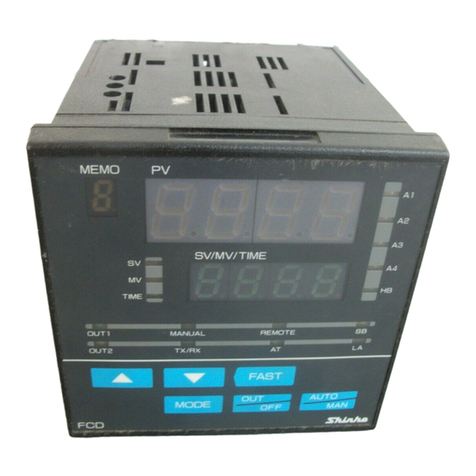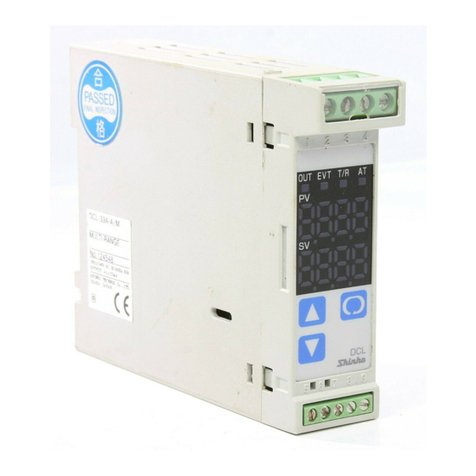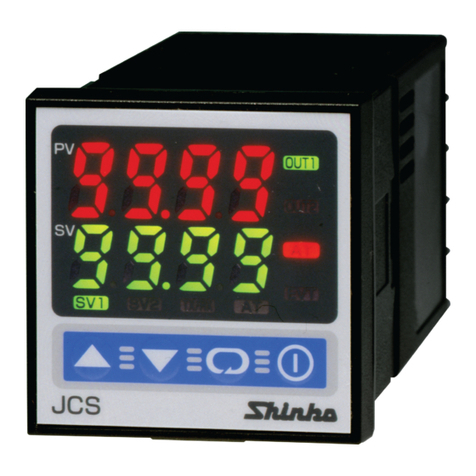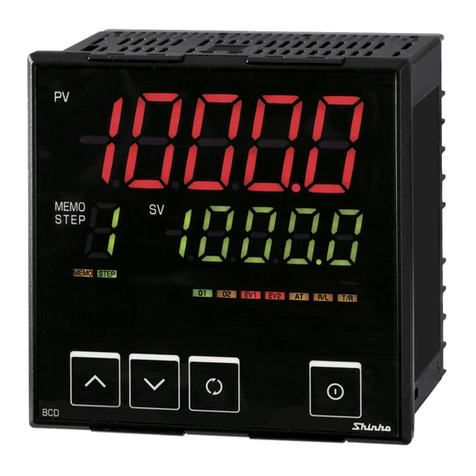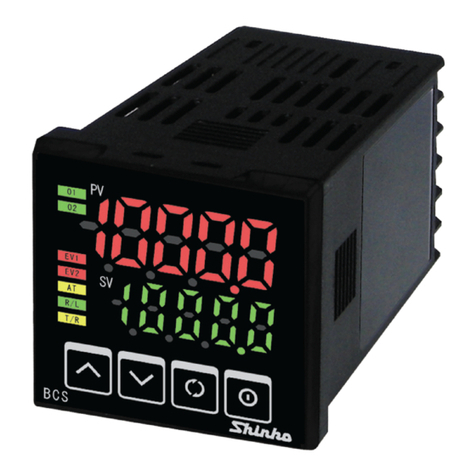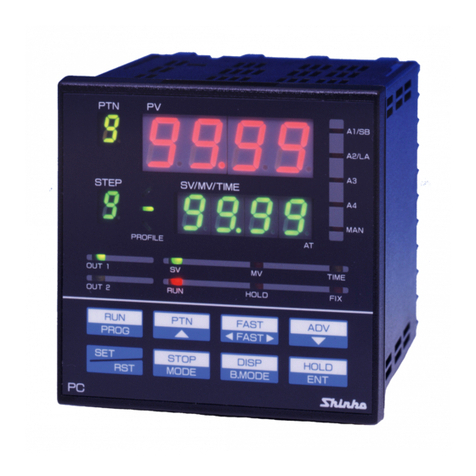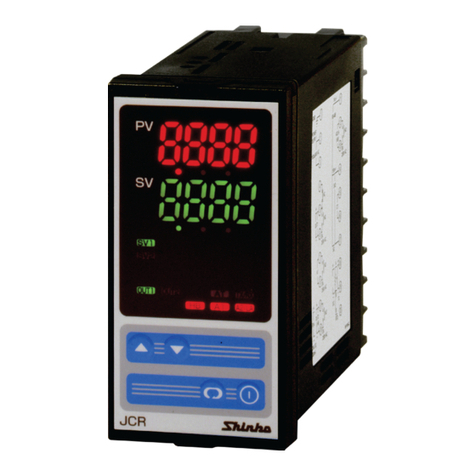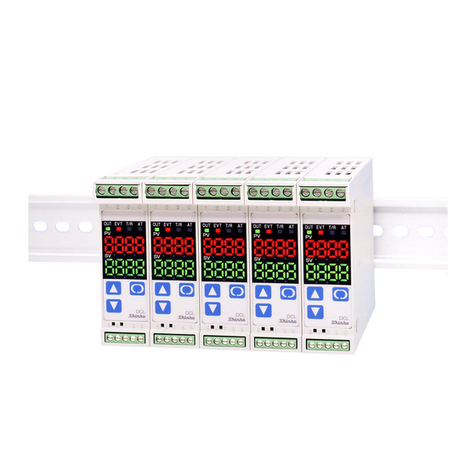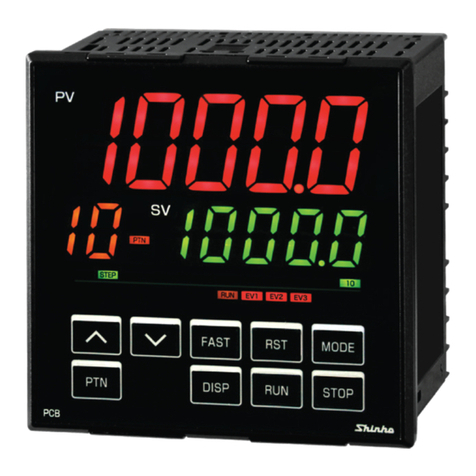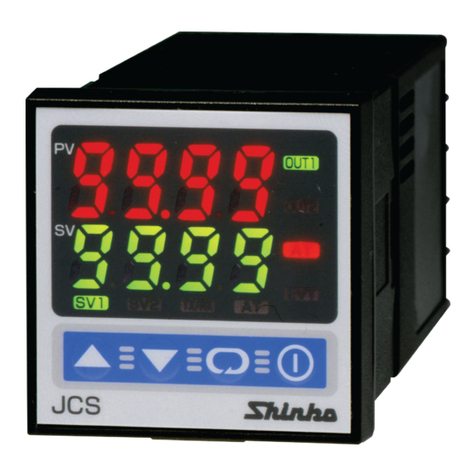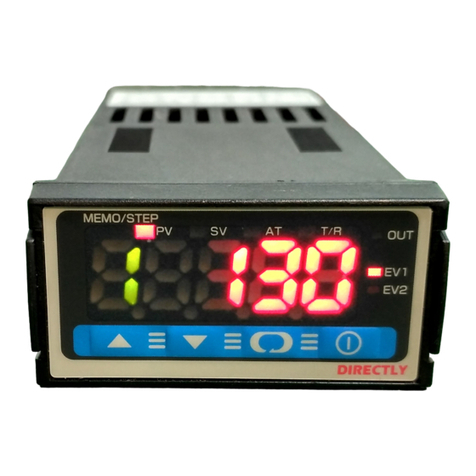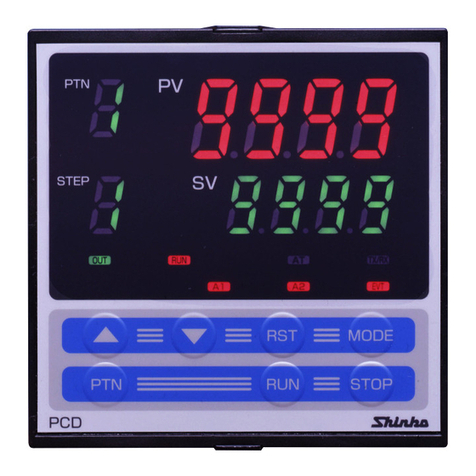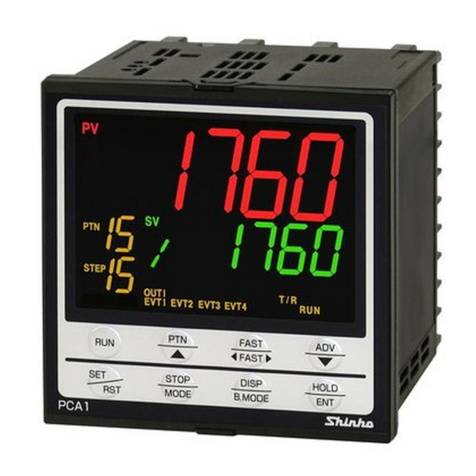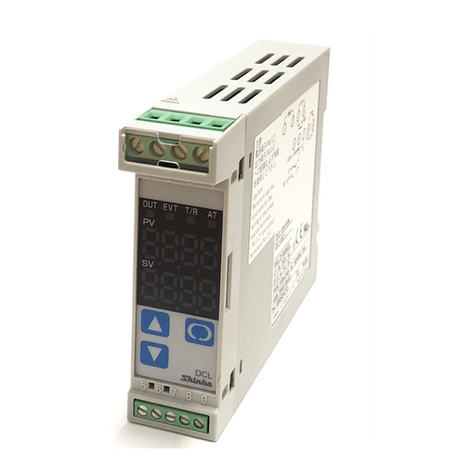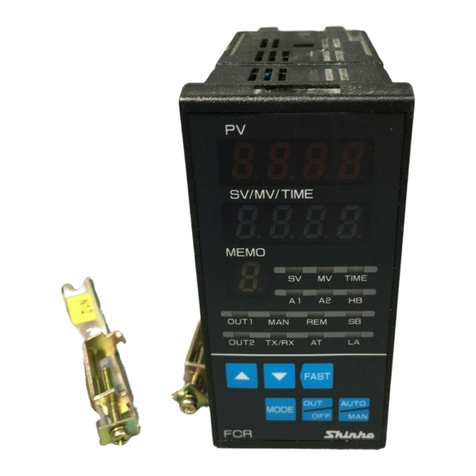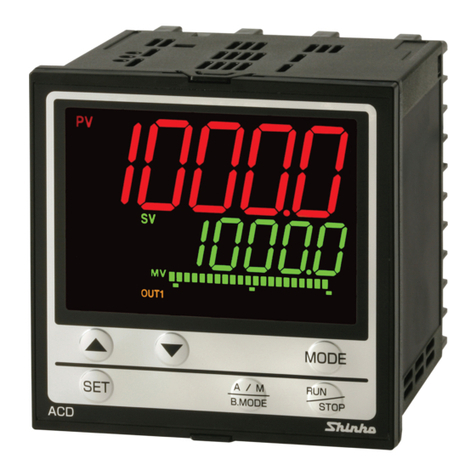4
4. Communication Procedure
Communication starts with command transmission from the host computer (hereafter Master), and
ends with the response of the DCL-33A (hereafter Slave).
• Response with data
When the master sends the Read command, the slave
responds with the corresponding set value or current status.
• Acknowledgement
When the master sends the Write command, the slave
responds by sending the acknowledgement after the
processing is terminated.
• Negative acknowledgement
When the master sends a non-existent command or value
out of the setting range, the slave returns a negative
acknowledgement.
• No response
The slave will not respond to the master in the following cases:
• Global address (Shinko protocol) is set.
(Fig. 4-1) • Broadcast address (Modbus protocol) is set.
• Communication error (framing error, parity error)
• Checksum error (Shinko protocol), LRC discrepancy (Modbus
ASCII mode), CRC-16 discrepancy (Modbus RTU mode)
Communication timing between the master and slave
Master Side (Take note while programming)
When the master starts transmission through the RS-485 communication line, the master is arranged so
as to provide an idle status (mark status) transmission period of 1 or more characters before sending the
command to ensure synchronization on the receiving side.
Set the program so that the master can disconnect the transmitter from the communication line within a 1
character transmission period after sending the command in preparation for reception of the response
from the slave.
To avoid collision of transmissions between the master and the slave, send the next command after
carefully checking that the master has received the response.
If a response to the command is not returned due to communication errors, set the Retry Processing to
send the command again. (It is recommended to execute Retry twice or more.)
Slave Side
When the slave starts transmission through the RS-485 communication line, the slave is arranged so as
to provide an idle status (mark status) transmission period of 1 or more characters before sending the
response to ensure synchronization on the receiving side.
The slave is arranged so as to disconnect the transmitter from the communication line within a 1
character transmission period after sending the response.
Command
Data
Command
Acknowledgement
Command
Negative
acknowledgement
Command
No response
Master Slave
